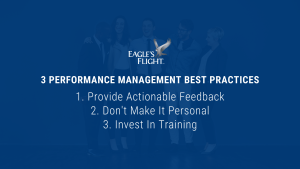Team building activities have been shown to improve overall workplace performance by increasing productivity, improving communication patterns, and encouraging creativity and innovation. But measuring your progress toward these overhead objectives can be challenging if you don’t know where to look or what metrics to focus on.
Measuring the return on your corporate team building investment is not as elusive as you might imagine, especially if you plan ahead and set clear goals. Some impacts can be observed, while others can be objectively measured. Our list includes both evaluation methods to help you gain a more complete picture of how team building initiatives are impacting your business.
1. Establish a Baseline of Comparison and Identify Long-Term Goals
It’s much easier to measure the success of your team building event if you establish a baseline for comparison and defined key objectives early in the planning process. Recording certain metrics prior to hosting your event will help you establish a benchmark and identify areas for improvement. Indicators such as absentee rates, retention rates, productivity rates, and customer satisfaction rates are all good metrics to consider measuring against.
In addition to collecting performance and productivity data, observe how your team operates on a daily basis and take note of internal dynamics and behavioral patterns. Do meetings drag on too long because people aren’t aligned on key issues? Do only a few employees contribute to group discussions? Have miscommunications resulted in inefficiencies or mistakes?
Identify areas where your team is struggling and decide how you will define improvement in those specific areas. Measuring against this definition using your baseline metrics and observations will help you gain a clear picture of your progress.
2. Know What a Successful Team Looks Like
Although this may sound abstract, studies have shown that successful and productive teams share certain social characteristics. In a Harvard Business Review study, researchers were able to accurately predict what team would win a business competition based on learned social characteristics alone—regardless of the quality or strength of their pitch.
Of course, some people are naturally more charismatic or communicative than others, but research shows that group dynamic—specifically group communication—is as important to a company’s success as the innate skills of individual contributors. Unlike our more hard-wired qualities, effective communication skills can be nurtured through team building activities that aim to establish trust and respect. Furthermore, team building events encourage individuals to forge personal connections that engender more engaged and cohesive group dynamics.
Clearly, communication is king. But what does effective communication look like in a professional, group setting?
The most successful teams exhibit these qualities:
- Everyone in the group speaks and listens roughly the same amount.
- Contributions are clear, succinct, and energetic.
- Communication is multi-directional and not just between leaders and subordinates.
- People demonstrate engaged body language, such as facing one another and using active listening and speaking gestures.
- Members actively brainstorm in small groups and bring ideas back to the larger team.
- Team members make an effort to collaborate face to face whenever possible rather than using technology.
Knowing how a successful team operates will help you determine if your employees are trending in the right direction and will allow you to identify areas to target in your next team building event.
3. Ask for Feedback
This is perhaps the most obvious evaluation method and the most widely overlooked. If you’re not sure where your team stands, it never hurts to ask. Sending out anonymous surveys using apps like TINYpulse or SurveyMonkey can help you gauge how your team feels and measure the impact of team building events.
Ask questions about workplace communication, group dynamics, productivity, creativity, job satisfaction, and office environment before and after your event. This can not only help you identify which areas need immediate focus, but also help you track your progress and identify opportunities for growth. To understand the long-term impact of your team building initiatives, make sure to ask for feedback at regular intervals rather than limiting responses to a one-time questionnaire.
Along with asking for more general feedback, don’t be afraid to ask employees about the team building event itself. Encouraging them to reflect on the event and discuss how team building lessons or skills might be applied to their job will boost engagement and content retention. In addition, this feedback can promote buy-in for future events by ensuring that their thoughts are heard.
4. Look at Your Bottom Line
Companies that invest in team building activities typically have higher employee retention rates and are more cohesive, innovative, and efficient—all qualities that directly impact their bottom line.
For example, when employees stay with a company longer, recruiting, hiring, and employee onboarding costs decrease. If teams are more effective, efficient, and innovative, then customer satisfaction and retention rates should improve, driving sustainable revenue growth. If your employees are happy and feel valued, you’ll not only attract the best talent, but also retain them—helping expand your brand’s influence.
These impacts may not be immediately evident, but team building should be thought of as a long-term investment in your company’s health. The behaviors and thought processes that you nurture today will lead to greater success and savings down the road.
The Takeaway
For the best results, make a commitment to incorporating team building events into your annual calendar and optimize as you go. Take stock of what worked and what didn’t after each event and identify areas to improve upon in the future. Don’t be afraid to seek out professional guidance to help you make the most out of your event budget, determine what activities are most likely to accomplish your goals, and execute the most engaging and compelling team building experience possible.











